[ZX Spectrum, Red Shift]
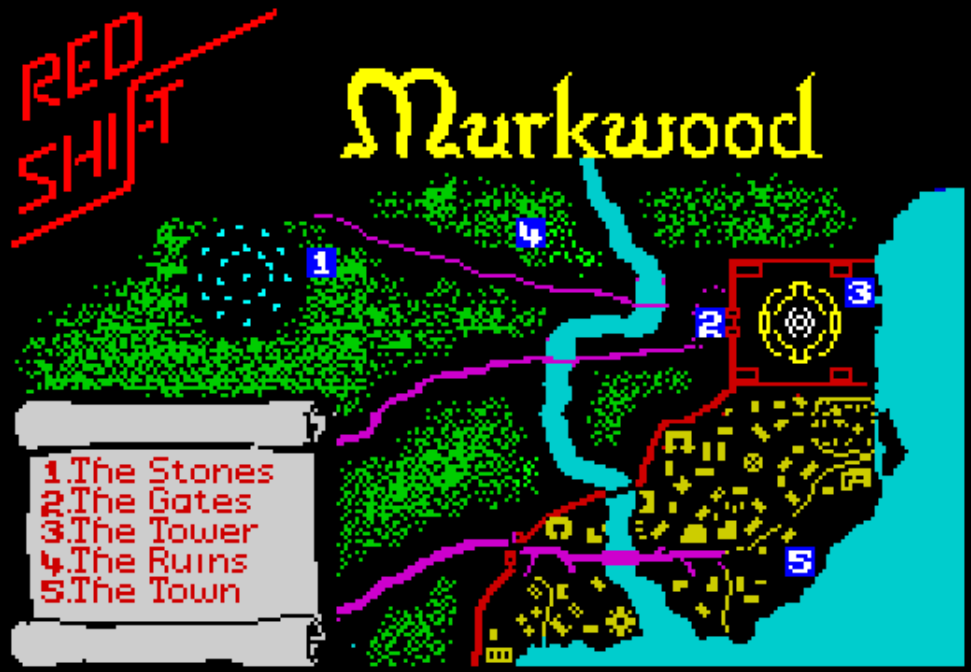
The Stones
Eorle Rethe insists it’s simply a “traditional rite of marginal arcane significance.” He says it with a straight face. But I know he’s lying. He has to be. He wouldn’t bind himself inside a circle of standing stones while Helig Tir’s minions close in, unless the stakes were far greater than he’ll admit. Meya knows better than to ask. Some knowledge Eorle guards more tightly than his life.
Helig Tir did not come himself. He sent Thorn. Of course he did. Thorn, his favoured acolyte. The brightest, yes, but also, his enforcer. Thorn and I studied together once, shared lectures, glared across ritual circles, chased the same ambitions. We were rivals even then. When I chose Eorle, he chose Helig. Of course he did.
Eorle is bound to the circle. His power remains, but he cannot take a single step beyond the stones. For six turns, he must stand within that ancient ring. My task is simple: protect him. I add to that: remind Thorn why he was always second-best.
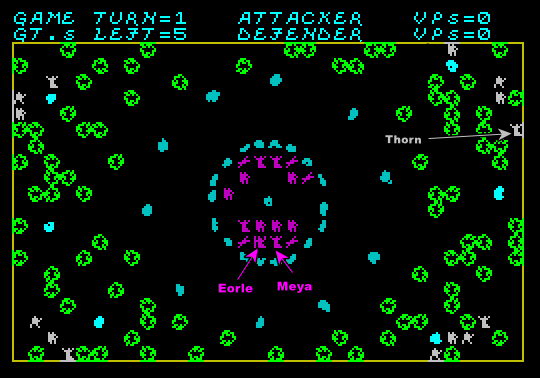
I knew Thorn would be coming, and I brought a few extras myself. Four acolytes who wished they were me: they’ll provide most of the firepower. Six guards. Some wardogs. I care little for any of them, and least of all the dogs. They don’t speak, they don’t cast, and they don’t throw javelins. But they make excellent walls.

The Heligites pepper the circle with firebolts and javelins. They mostly miss, and when they don’t, all they manage to do at this distance is wound our dogs. Disappointing. I expected better from Thorn.
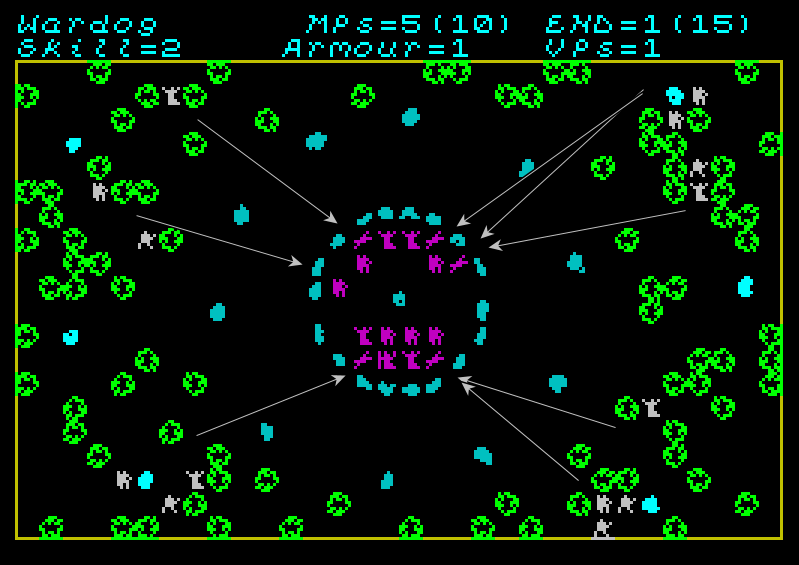
My turn. I take the least daft of the acolytes and three guards and leave the circle. We’ll kill them, quite simply.
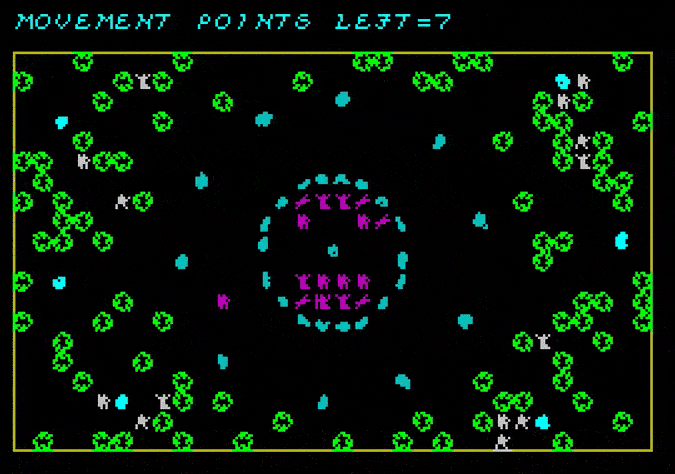
Eorle strikes down one of Thorn’s minions with a single blast from the inside of the Circle. Say what you will about the old wizard – he rarely misses. The defenders I left behind loose a volley of their own. Their aim is poor, but sheer volume sometimes works. One Heligite acolyte collapses under the barrage.
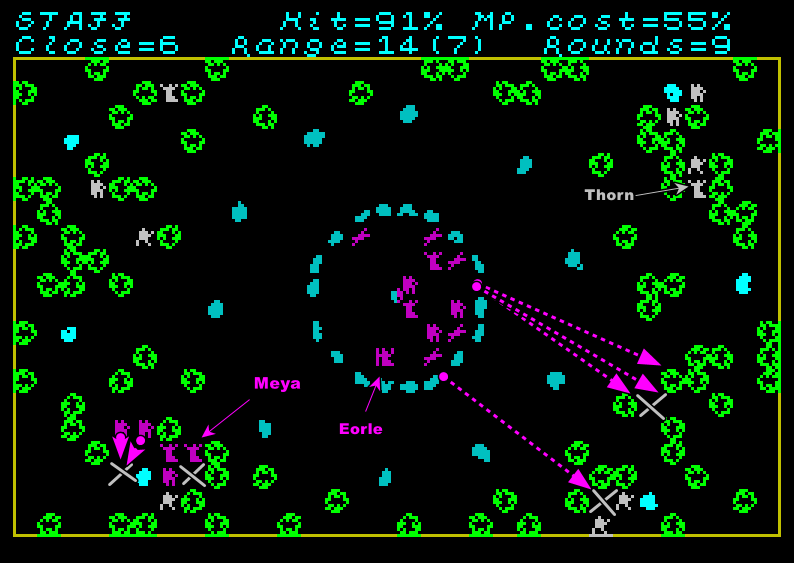
The attack stalled before it began. I’d say “of course,” but this is unlike Thorn. I expected more of him. Instead, he lingers at range, wasting time on the dogs. What’s his plan? His real plan? Certainly not killing two of our dogs – and these were half-dead already.
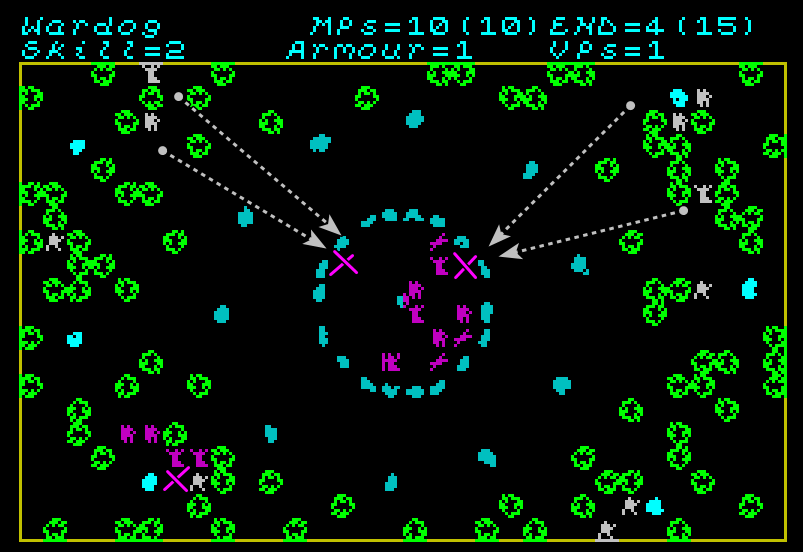
If Thorn won’t come closer, I will. This scuffle is already won anyway. Even the guards I left behind decided on their own to charge from the circle to hack at his swordsmen. Pointless.
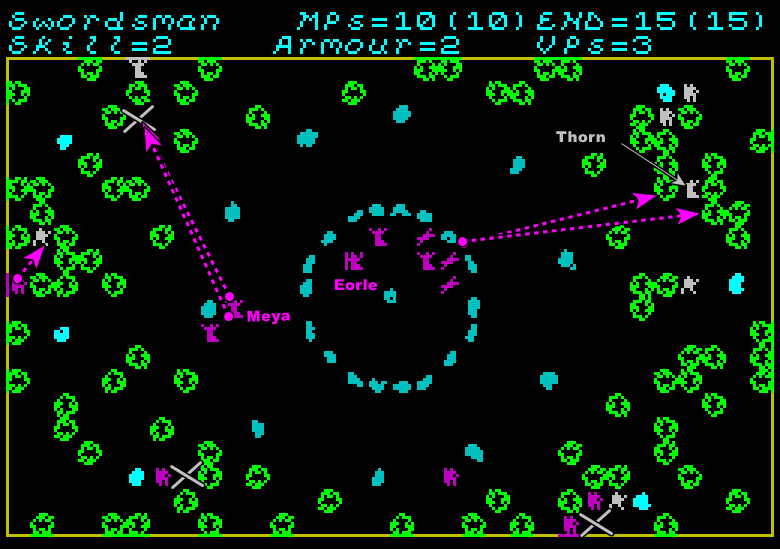
Soon, only Thorn and two of his guards remain.
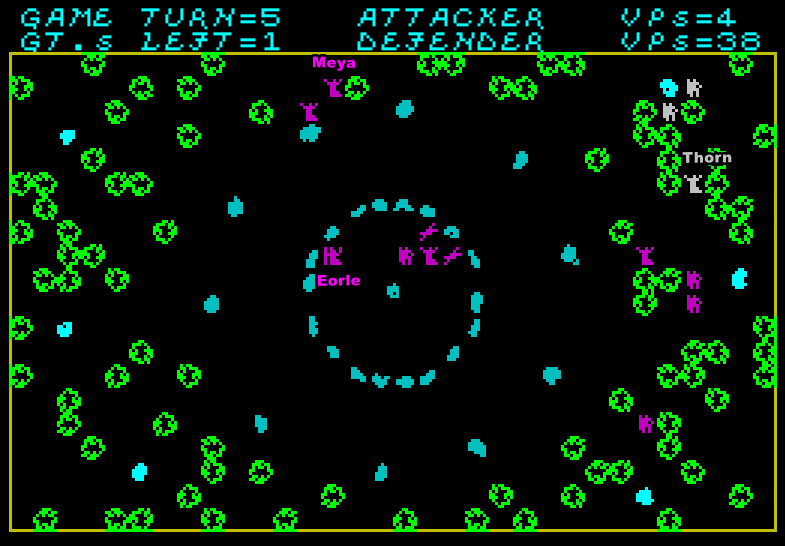
Then – just Thorn. I move in to finish him. Words form on my lips. And then, he vanishes. Of course he does. Too easy. Far too easy.
Eorle won’t say what he truly did within the circle. Of course he won’t. Meya knows better than to ask.
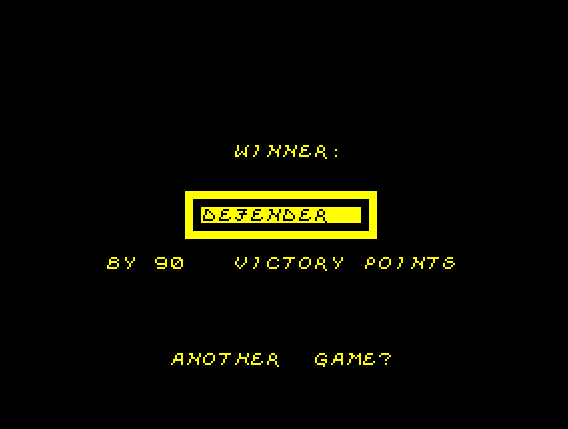
The Gate
After the battle at the Circle, Eorle returned to his tower without a word. I followed him as far as his chambers, but that was the end of it. No debrief, not even a glance in my direction. Just one final command:
“No one must disturb me. For any reason.” So be it.
A few hours passed, and then a messenger arrived from the Baron. It was for Eorle, naturally, but intercepting whatever Baron Achos chooses to send has always been part of my role. For once, the Baron had kept it brief:
“An enemy army is regrouping at the gate”.
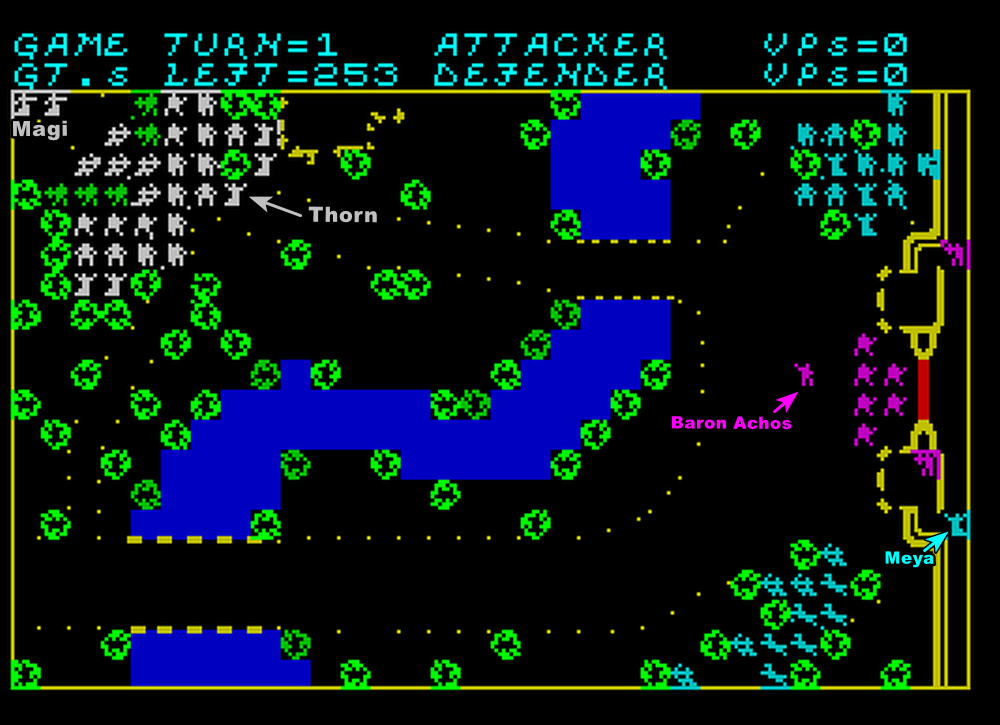
That was all I needed to know anyway. Thorn, of course. I hadn’t defeated him at the Circle. He had only played pretend.
I climbed to the battlements and saw them for myself: Helig’s host, or most of it by the looks of things, and Thorn at their head. Worse still than Thorn, I counted two magi, siege engines in human form. Only their powerful magic could destroy the powerful brass gates of the city – provided they get close enough. If I could kill them, the battle would be won.
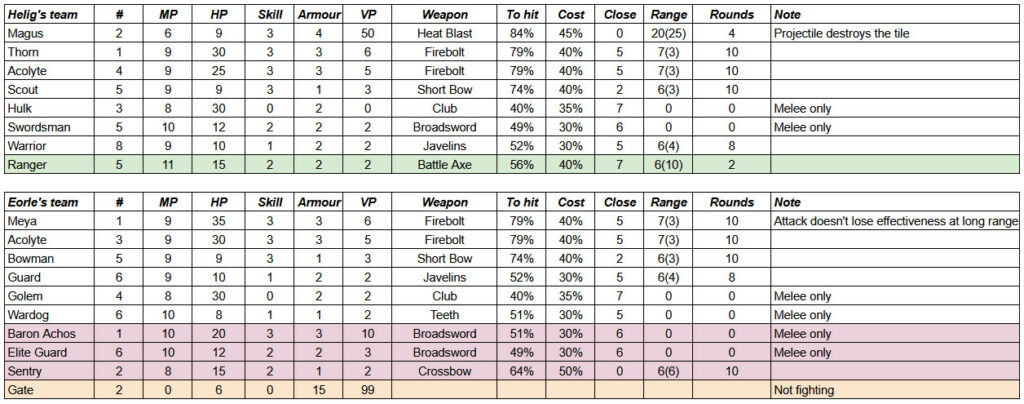
Baron Achos had already begun deploying his levy, but what could a few swordsmen do against Thorn’s magic? But Eorle had left me in command of his contingent, more powerful than the Baron could ever dream to muster, and I added them to the defence. If Thorn thought I would just watch him win, he was wrong, and hopefully soon dead wrong.
Thorn separated his army into two forces, each one escorting a magus. Likewise, I split mine: my archers would use the cover of the trees near the Southern bridge, while the rest of my force would block the smaller Northern bridge.
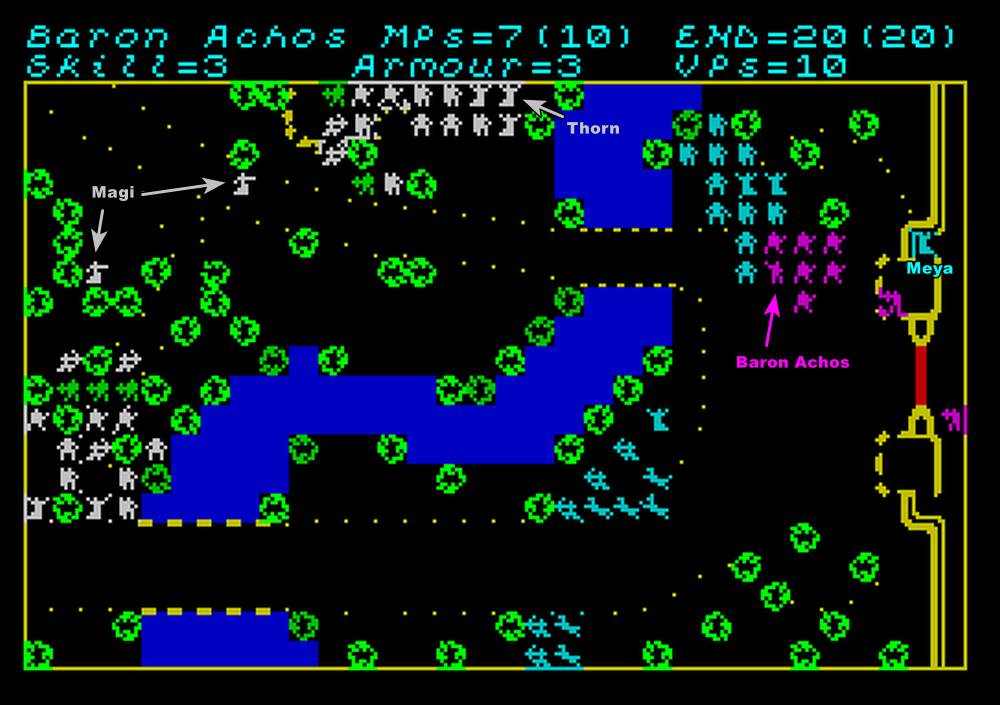
North of the gate, my forces exchanged firebolts and javelins with Thorn’s minion across the bridge. Our bowmen, hidden behind trees between the two bridges, made almost every shot count. It was perfect. Half of Thorn’s army was pinned down against a force twice its size.
There were, of course, mishaps, like when the Baron charged across the bridge. A noble, dramatic and stupid move, which at least drew some attention away from my shooters. It also had another advantage: it left me in sole command.
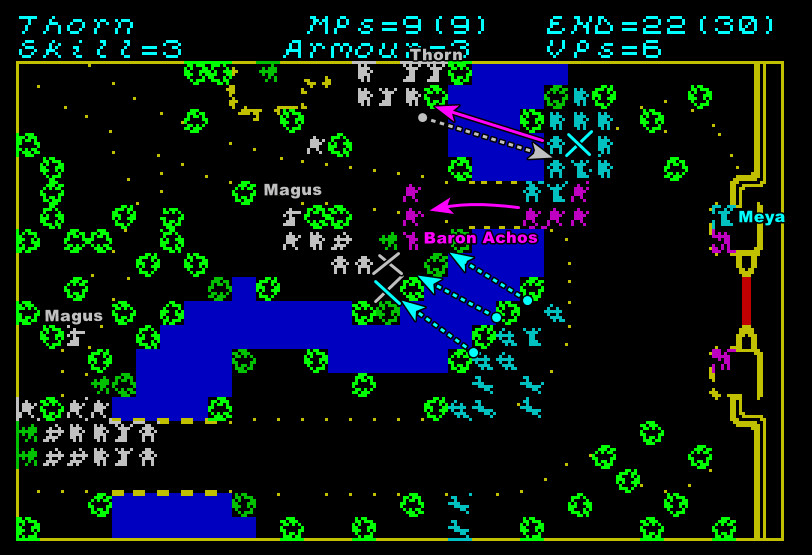
The stalemate at the bridge held for a time, and I was slowly gaining an advantage. But then came the second wave from the South, marching in a column formation, the tip protected by massive golems.
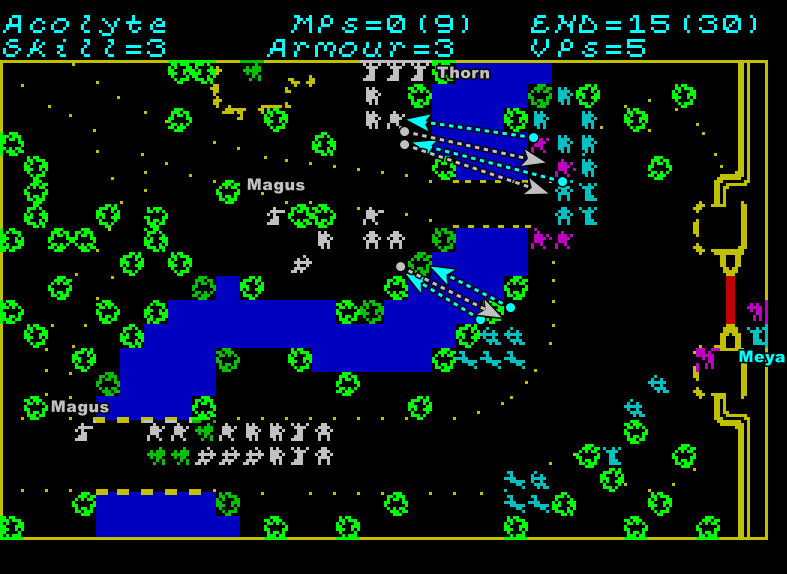
I diverted acolytes from the bridge and personally rained down magic from the embattlement. With the help of the archers, we managed to bring one of the golems down. That’s all we needed to reach the acolytes behind them and kill one of them. Then, I released the dogs.
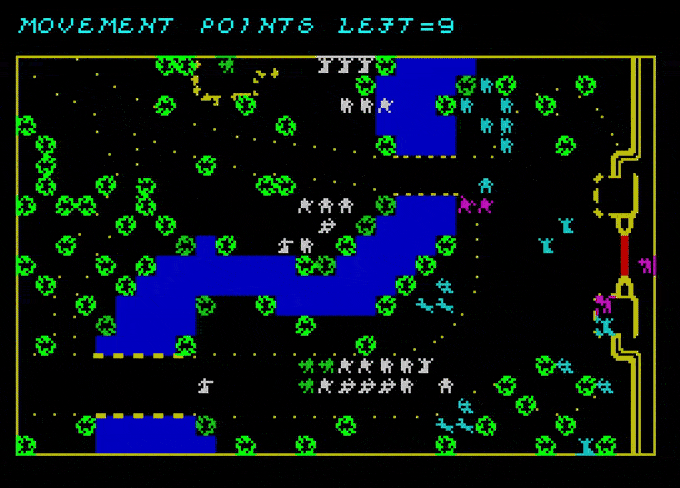
The column faltered. Occupied as they were by our dogs, the column could not advance and we could shoot them at leisure.
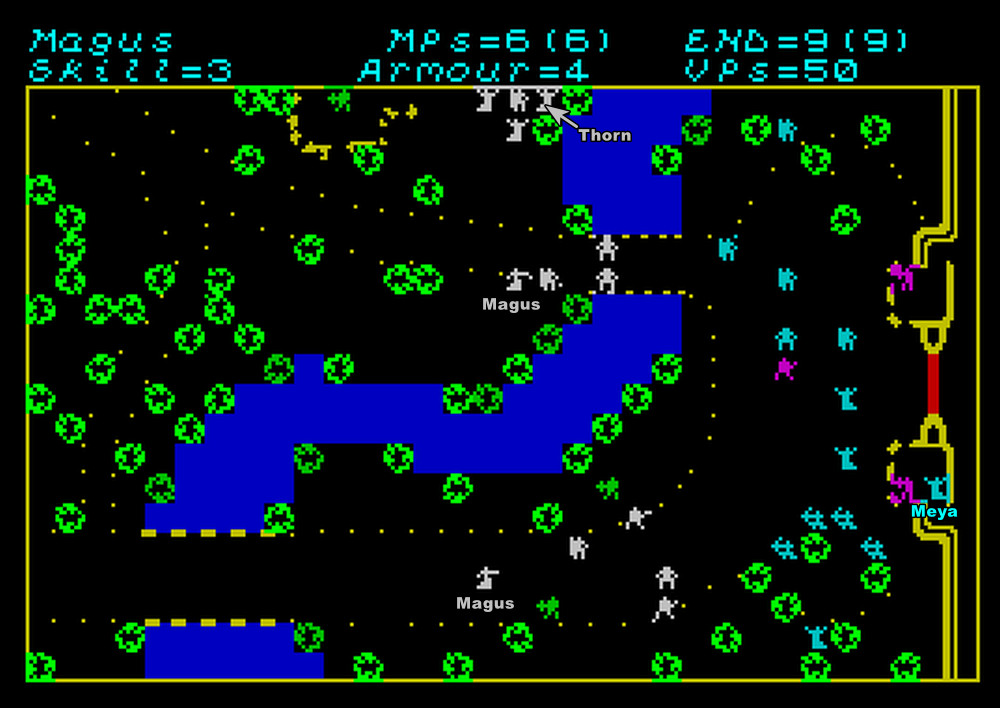
Eventually, the Heligites broke entirely. Some, including the magus, tried to flee across the river.
It should have ended there, but this time Thorn was not there to pretend. While we held the line South of the gate, he and his acolytes had whittled down our guards on the bridge. By the time I turned my attention back to him, it was too late.
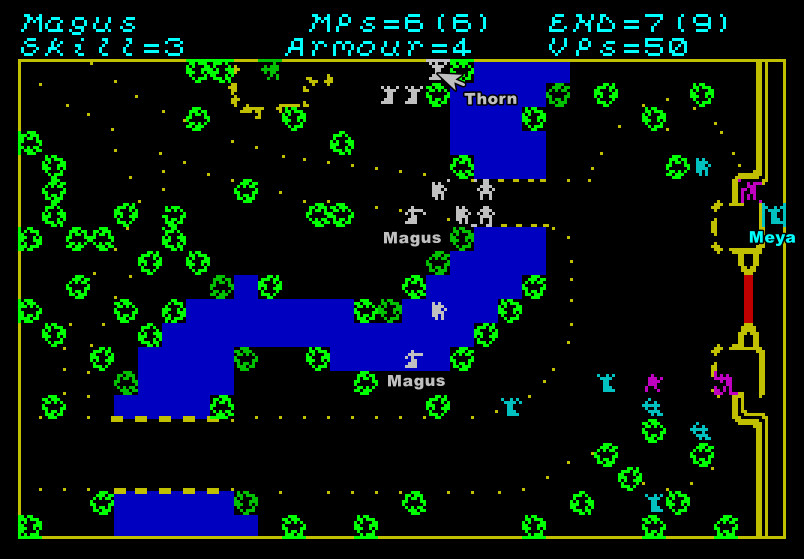
Short of ammo, short of magic, short of men, I pulled what remained into a final formation before the gate, while Thorn advanced, protected by two golems.
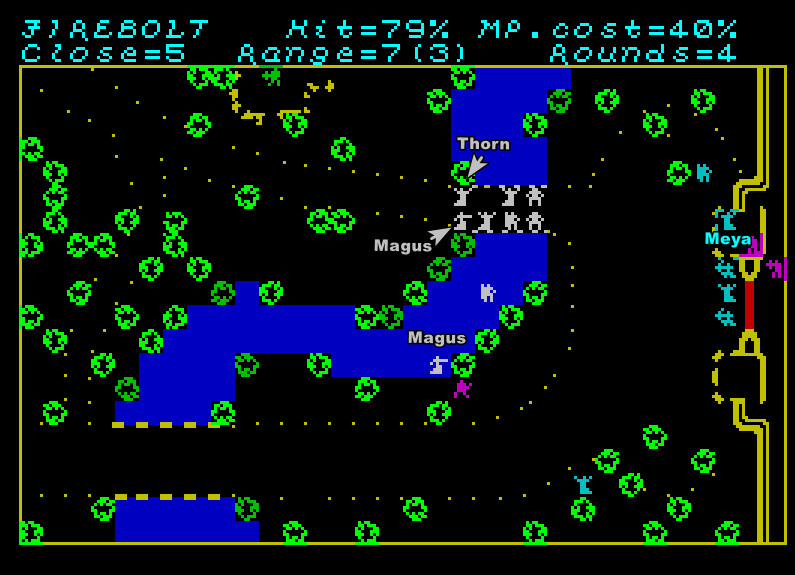
Alas, what was left of our force could not destroy the constructs protecting Thorn’s survivors. Safely behind their mobile cover, they killed the few men I had left.
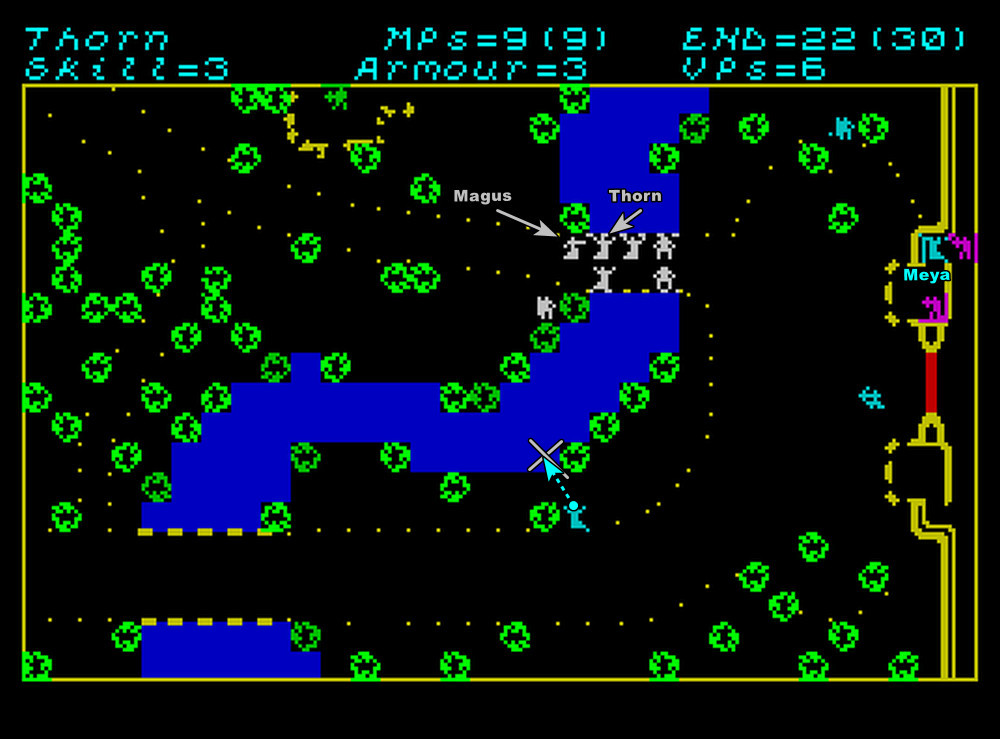
Then the magus made it to the gate. I was all out of magic, and I could only witness what happened next. Two blasts, and the gate fell.
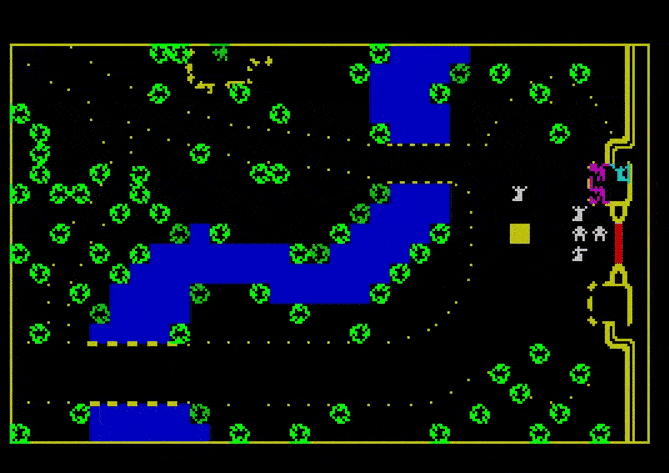
There was only one thing to do: return to the Tower.
Eorle would have to be disturbed after all.